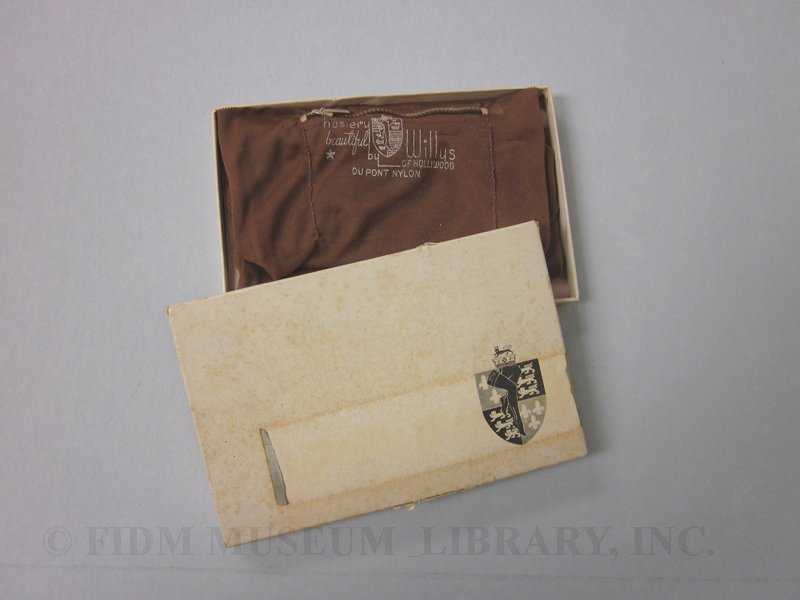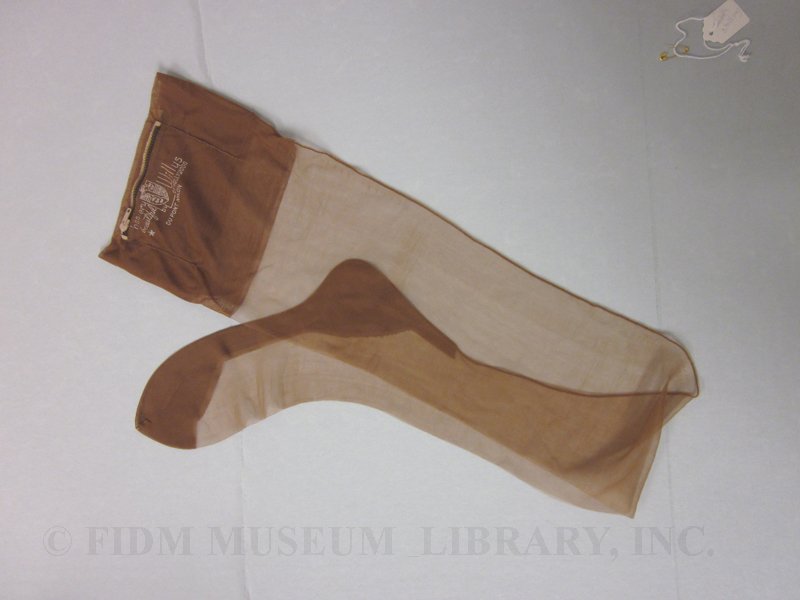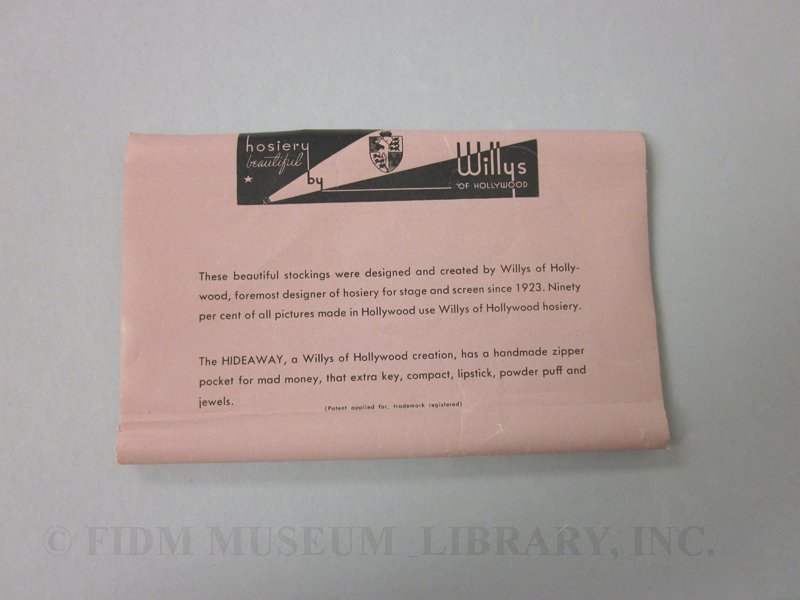The Stocking of the Stars
Amateur boxer Willy de Mond in got his start in fashion in New York in the early 1920s, supplying hosiery to the Ziegfeld Follies and other vaudeville revues. He quickly realized that the business attracted a steady stream of repeat customers; actresses often wore out five or six pairs of stockings in a single day, especially if they had to perform in dance sequences.1 In 1930, de Mond relocated to Hollywood, where his innovative designs quickly won the reputation of “the stocking of the stars.” He made 12 pairs of identical stockings decorated with appliqued sequin butterflies for Alice Faye to wear in 1937’s In Old Chicago; they cost $250 per pair. 2 De Mond collaborated with dancer Irene Castle to reproduce historic hosiery for Ginger Rogers to wear in 1939’s The Story of Vernon and Irene Castle, set in 1906-18.3 De Mond's designs were worn on and offscreen by Rogers, Fay Wray, Jean Arthur, Marlene Dietrich, Rita Hayworth, and Irene Dunne, among other starlets. The firm even advertised that its stockings had been tested for durability by studio wardrobe departments.4 By the late 1930s, “Willys Hosiery” had become "Willys of Hollywood." De Mond claimed that ninety percent of all Hollywood films used his hosiery.
 “The Hideaway” Nylon Stockings
“The Hideaway” Nylon Stockings
Willys of Hollywood
c. 1950-1959
Gift of Mela Hoyt-Heydon
2012.1169.1A-E
As hemlines rose in the 1930s, hosiery became a fashion item, and flashy colors, patterns, embellishments, and clocks—the ornamental designs on the sides of stockings—grew more elaborate. Willys of Hollywood became "known for doing tricks with hosiery," as Women’s Wear Daily put it, acquiring several patents. Novelty ensured that hosiery sold fast—and went out of style quickly. De Mond firmly believed that the right pair of stockings could make a short woman look taller, or thick ankles look thinner.5 In 1937, Willys of Hollywood relocated to larger quarters and added a dyeing service—an important selling point as color film was introduced.6
World War II inspired the firm's "Blitzkrieg" series of 1941, which included stockings with phosphorous-painted, glow-in-the-dark beads glued on in the shape of bombers, anti-aircraft guns, submarines, tanks, and parachutists; one pair was emblazoned with the American flag.7 Another wartime novelty was bright red "toenails" painted on evening hose to wear with open-toed shoes. But restrictions on nylon and rayon made stockings hard to come by during the war, forcing many women to go bare-legged. In 1946, production ramped up again to meet voracious demand. The following year, de Mond opened a new factory, dye plant, and retail store to keep up with orders. For the first time, Willys of Hollywood stockings became widely available outside of Hollywood.
In the midst of this expansion, de Mond announced plans to introduce a new novelty stocking each month. There were stockings with 24-carat gold clocks, rhinestone-encrusted stockings, and ombre stockings. De Mond designed padded hosiery "for women with shrunken, deformed or extremely thin legs."8 These "Hideaway” stockings in the FIDM Museum collection have "a handmade zipper pocket for mad money, that extra key, compact, lipstick, powder puff and jewels," according to the packaging.
In 1947, de Mond was honored with a special order placed by Lord Inverchapel, the British Ambassador to the U.S., for six identical pairs of 15-denier seamless, sandal-foot nylon stockings in ivory, with hand-sewn clocks in the shape of an arrow, studded with seed pearls—a wedding gift for Princess Elizabeth of England. "There are 45 perfectly-matched pearls on each side of the stocking," de Mond told the Spokane Daily Chronicle. "I sewed them on by hand, tacking them to the strands of nylon so they won't pull."9 The order was airmailed directly to Buckingham Palace, and the princess wore one of the six pairs at her wedding to Philip Mountbatten on November 20, 1947.10 De Mond soon introduced a similar, commercially produced pair marketed to brides.
Willys of Hollywood was sold to Sanson Hosiery in 1950; only Mr. de Mond's special creations continued to bear his first name as well as Sanson's.
1Women's Wear Daily, February 26, 1937.
2Women’s Wear Daily, November 12, 1937.
3Women’s Wear Daily, October 28, 1938.
4Women’s Wear Daily, November 27, 1942.
5 Women’s Wear Daily, July 16, 1943.
6Women’s Wear Daily, September 3, 1937.
7Women’s Wear Daily, January 31, 1941.
8Women’s Wear Daily, February 2, 1945.
9Spokane Daily Chronicle, November 5, 1947.
10Women’s Wear Daily, October 31, 1947.

